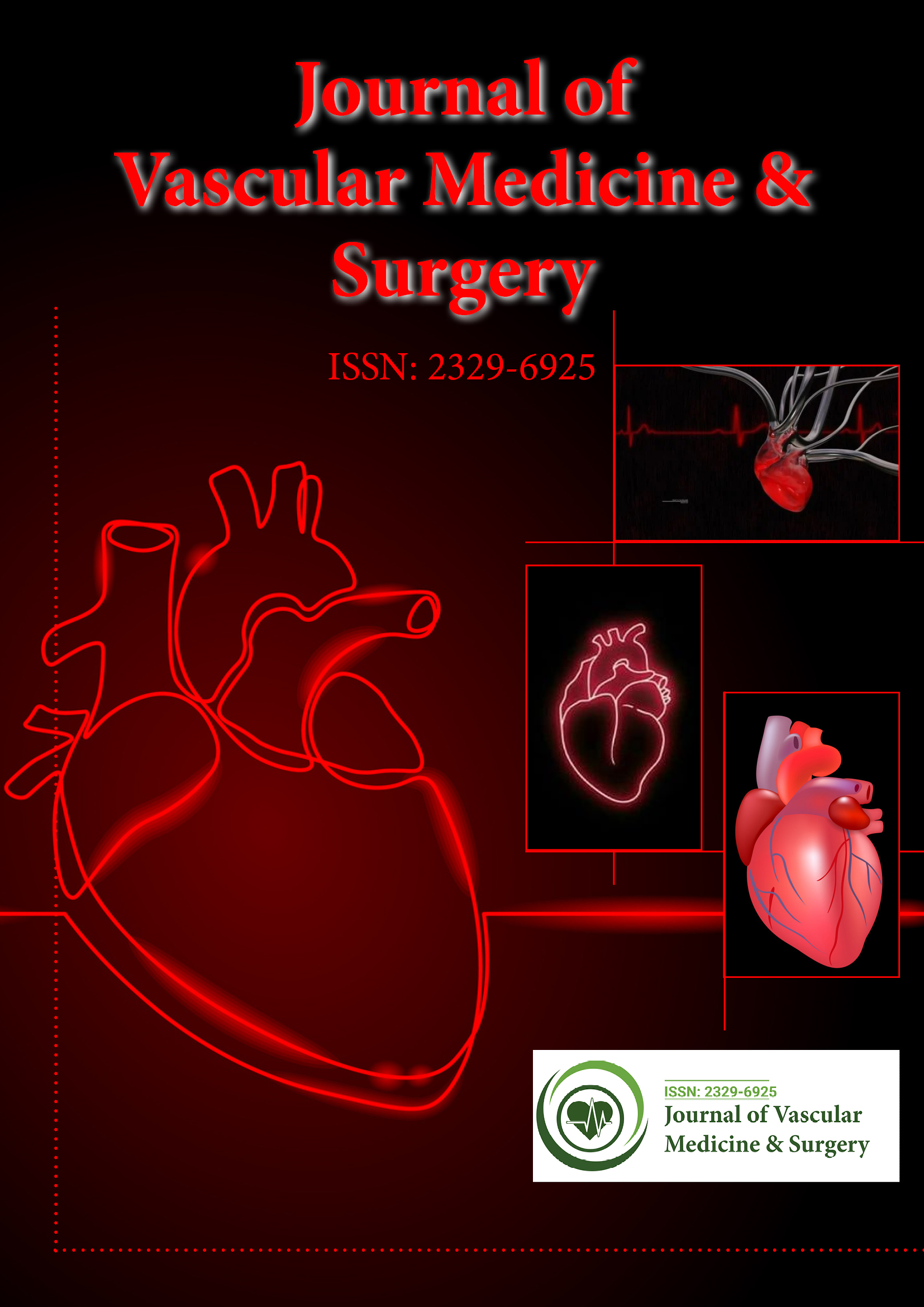Indexed In
- Open J Gate
- Academic Keys
- RefSeek
- Hamdard University
- EBSCO A-Z
- OCLC- WorldCat
- Publons
- Euro Pub
- Google Scholar
- SHERPA ROMEO
Useful Links
Share This Page
Journal Flyer

Open Access Journals
- Agri and Aquaculture
- Biochemistry
- Bioinformatics & Systems Biology
- Business & Management
- Chemistry
- Clinical Sciences
- Engineering
- Food & Nutrition
- General Science
- Genetics & Molecular Biology
- Immunology & Microbiology
- Medical Sciences
- Neuroscience & Psychology
- Nursing & Health Care
- Pharmaceutical Sciences
Commentary Article - (2023) Volume 0, Issue 0
Treatment Methods of Atherosclerosis and its Risk actors
Kimura Tsukui*Received: 07-Jun-2023, Manuscript No. JVMS-23-22227; Editor assigned: 09-Jun-2023, Pre QC No. JVMS-23-22227 (PQ); Reviewed: 23-Jun-2023, QC No. JVMS-23-22227; Revised: 30-Jun-2023, Manuscript No. JVMS-23-22227 (R); Published: 10-Jul-2023, DOI: 10.35248/2329-6925.23.S16.517
Description
Atherosclerosis is a complicated progressive vascular disease characterized by the build-up of plaque in arterial walls, leading to narrowing and hardening of the arteries. Atherosclerosis is a chronic inflammatory disease that affects the inner lining of arteries, leading to the formation of plaques composed of cholesterol, fatty deposits, calcium, and inflammatory cells. These plaques can gradually narrow and harden arteries, reducing blood flow and increasing the risk of cardiovascular incidents such as heart attacks and strokes.
Pathogenesis of atherosclerosis
The development of atherosclerosis involves multiple processes, including endothelial dysfunction, lipid accumulation, inflammation, and plaque formation. Endothelial dysfunction caused by various risk factors such as high blood pressure, smoking, and high cholesterol levels, results in a compromised arterial wall and increased permeability to lipids. Lipids, particularly Low-Density Lipoprotein (LDL) cholesterol, permeate the arterial wall and endure transformation, triggering an inflammatory response. This response attracts immune cells, such as monocytes, which engulf modified lipids and produce foam cells. Foam cells, along with smooth muscle cells and extracellular matrix, contribute to the formation of atherosclerotic plaques.
Risk factors of atherosclerosis
Atherosclerosis develops and progresses due to a number of risk factors. Modifiable risk factors include smoking, hypertension, dyslipidemia, diabetes mellitus, obesity, sedentary lifestyle, and an unhealthy diet. Non-modifiable risk factors include age, gender, and family history of cardiovascular diseases. The presence of multiple risk factors increases the probability of developing atherosclerosis.
Diagnostic methods of atherosclerosis
Various diagnostic techniques help in the assessment and diagnosis of atherosclerosis. Non-invasive imaging techniques, such as carotid ultrasound, coronary calcium scoring, and Computed Tomography Angiography (CTA), provide detailed information about plaque burden and arterial stenosis. Functional tests, including stress testing and Ankle-Brachial Index (ABI) measurement help to evaluate the hemodynamic significance of arterial narrowing. Invasive procedures, such as coronary angiography, are performed when precise visualization of arterial blockages is required.
Treatment techniques of atherosclerosis
The management of atherosclerosis aims to reduce symptoms, prevent disease progression, and minimize the risk of cardiovascular events. Lifestyle modifications, such as smoking cessation, regular exercise, healthy diet, weight management, and stress reduction, are essential for overall cardiovascular health. Medications, including statins, antiplatelet agents, antihypertensive drugs, and glucose-lowering agents, are prescribed to control risk factors and prevent complications. Interventional therapies such as angioplasty with stenting or Coronary Artery Bypass Grafting (CABG) may be required to restore blood flow during instances of severe arterial stenosis.
Prevention methods of atherosclerosis
Preventing the development and progression of atherosclerosis is importance significance. Primary prevention involves addressing risk factors through lifestyle modifications and risk factor management. Public health initiatives, such as promoting healthy behaviors, raising awareness, and implementing policies to reduce tobacco use and unhealthy diets, play an essential role in preventing atherosclerosis on a population level.
Advancements in the pathogenesis of atherosclerosis and the development of targeted therapies provide the possibility of improved therapeutic methods. Research efforts are focused on identifying novel therapeutic targets, immunomodulatory methods, and precision medicine interventions. The integration of genetic and biomarker data with clinical information has an opportunity to improve personalized risk assessment and therapy optimization.
Citation: Tsukui K (2023) Treatment Methods of Atherosclerosis and its Risk Factors. J Vasc Surg. S16:517.
Copyright: © 2023 Tsukui K. This is an open access article distributed under the terms of the Creative Commons Attribution License, which permits unrestricted use, distribution, and reproduction in any medium, provided the original author and source are credited.

